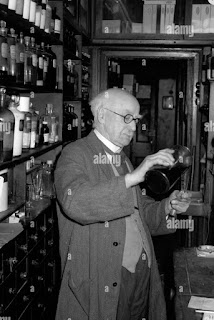I was encouraged by the interesting comments on my last post about the businesses I came across while working in accountancy in the nineteen-seventies, and the further thoughts they sparked off. The following captured my ambiguous feelings about it at the time:
Brown paper parcels containing vouchers,
Cash books and day books, bank statements in pouches,
Ledgers and ledgers, both sales and bought,
Ticking up postings requires little thought.
One big difference between then and now was the lack of computerisation. Nearly all records were handwritten. Some were in beautiful leather-bound ledgers, and there was a sense of pride and skill in being able to keep them neat and tidy in fountain pen, without mistakes and corrections.
Others might be in scruffy self-duplicating docket books. It was interesting to follow them around factories, matching them to drums of dye colour, or to trace them from lengths of cloth to the despatch of finished items of clothing. This was done to ensure the accounting systems were working correctly and detect possible fraud (which was rarely found).
But often the books of smaller clients would be brought into our own offices where you might be stuck for several weeks bored to tears, hence my parody of ‘Favourite Things’.
I made distractions for myself. When we took on a model agency as a new client I was asked to produce a set of example book keeping entries for the owner to follow so that she knew how to fill them in. To the annoyance of my boss I used the names of famous models such as Twiggy and Jean Shrimpton, causing him to exclaim: “For goodness’ sake, Tasker, we’re a firm of Chartered Accountants, not Monty Python’s Flying Circus!” Too late. They were already inked into the first page of the cash book.
We also prepared sets of annual accounts for clients, filed them with the Inspector of Taxes on their behalf and dealt with their tax affairs. As a result I have never been afraid of dealing with outfits like HMRC or the DSS.
You could also get stuck of larger clients checking off lists against each other. It wasn’t called “double entry” book-keeping for nothing. At one cloth warehouse it took several weeks to work through the sales ledgers. Statistical sampling and tests of significance would not have been considered adequate then. We checked nearly everything.
Another big difference was the sheer variety of types of business. We made so many more of our own things before globalisation. Now, Central Leeds seems to be predominantly financial rather than physical, and nearly everything takes place at desks in offices.
Computers sucked the life blood out of everything.


